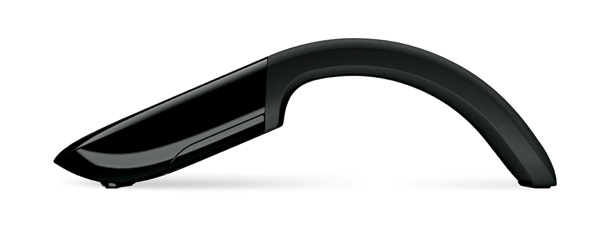
Burj Al Arab

































The tiny new moon — announced today (July 20) and called P4 for now — brings the number of known Pluto satellites to four. And the find, made with the Hubble Space Telescope, suggests that NASA's New Horizons probe could make some big discoveries, too, when it makes a close flyby of Pluto in 2015, researchers said.
"The discovery of P4 just reinforces what we knew before: This is going to be completely new territory," said Hal Weaver, New Horizons project scientist at the Johns Hopkins University Applied Physics Laboratory in Laurel, Md. "We can't wait." [Pluto: A Dwarf Planet Oddity]
Since its launch, New Horizons has traveled more than 1.8 billion miles (2.9 billion kilometers), and it's slated to make a close pass of Pluto in July 2015.
Scientists have been mapping out the mission's details for years. The discovery of P4 gives them something else to study, but it doesn't throw a big monkey wrench into their plans, researchers said.
"We obviously want to pay attention to it," New Horizons principal investigator Alan Stern, of the Southwest Research Institute, told SPACE.com. "But it's not going to reshape the basic concentration on Pluto and Charon, and also Nix and Hydra."
The newly discovered moon adds support to a theory that Pluto had a violent past. The system probably formed after a massive collision between two Pluto-size bodies about 4.6 billion years ago, Weaver said. The dwarf planet's satellites likely coalesced from the debris flung into space by this cosmic smash-up.
"The evidence is pointing toward that particular theory for the formation of the Pluto system," Weaver told SPACE.com.
More discoveries to come?
Scientists found P4 using NASA's Hubble Space Telescope during a search for possible rings around Pluto. (Hubble also detected Nix and Hydra back in 2005.) No rings have turned up, but that doesn't mean they don't exist, Weaver said.
The prospect of rings — and perhaps more undiscovered satellites — around Pluto is intriguing to mission planners. Yet it also induces a bit of anxiety, since the team wants New Horizons to emerge from its Pluto encounter without too much damage from fast-moving bits of dust and debris.
"This is motivating us to look even harder for more stuff in the Pluto system," Weaver said. "A lot of that is for safety reasons."
New Horizons was designed to unlock some of Pluto's long-held mysteries — what it looks like, what it's made of and the nature of its atmosphere, for example. The discovery of P4 may be raising scientists' expectations of what the probe will deliver.
"It just heightens the probability that we'll find something that we hadn't expected," Weaver said.
by Mike Wall, SPACE.com Senior Writer

Designers: Donn Koh with One & Co. Design Inc, San Francisco, and Microsoft Industrial Design Team
Microsoft Arc Touch Mouse Spot from Donn Koh on Vimeo.











President Rahmon advised parents to pick names from the Shahnameh or 'Book of Kings' Photo:
"I pay close attention to surnames and names when I appoint anyone to a leading post in the government,"
President Emomalii Rahmon told a group of children gathered for a speech on national TV. "Sometimes, reading surnames can make one shudder."
"For example," he said. "Gurgakov comes from the word 'wolf'.
Janjoliyev derives from the word 'conflict'.
How can you name a person after a wolf?"
President Rahmon maintains a steely grip on the mountainous former Soviet republic and has weakness for petty rules, recently taking against beards and the hijab, for example.
A law "on parental responsibility" is in parliament which could give authorities a veto over what names parents can give to their children, rattling the mainly Islamic opposition, who fear an effective ban on musim names.
In his speech, President Rahmon advised parents instead to pick names from the Shahnameh or 'Book of Kings', a epic written a thousand years ago that is revered in persian-speaking Tajikistan and its neighbour Afghanistan.
"Parents, leaf through historical works like Shahnameh or classic Tajik works where you will find many adequate, good, beautiful names," he said.
By Richard Orange, Almaty






Cultural studies often showed that the types of gurgles and babble that a newborn used seemed to be unique to specific parental language groups. French babies babble in a certain way that is different from, say, Chinese babies. Scientists wondered why this was happening.
A new study published in Current Biology and summarized in ScenceDaily suggests that infants begin picking up elements of what will be their first language in the womb, and certainly long before their first babble or coo.
"The dramatic finding of this study is that not only are human neonates capable of producing different cry melodies, but they prefer to produce those melody patterns that are typical for the ambient language they have heard during their fetal life, within the last trimester of gestation," said Kathleen Wermke of the University of Wurzburg in Germany. "Contrary to orthodox interpretations, these data support the importance of human infants' crying for seeding language development."
Human fetuses are able to memorize sounds from the external world by the last trimester of pregnancy, with a particular sensitivity to melody contour in both music and language, earlier studies showed. Newborns prefer their mother's voice over other voices and perceive the emotional content of messages conveyed via intonation contours in maternal speech (a.k.a. "motherese"). Their perceptual preference for the surrounding language and their ability to distinguish between different languages and pitch changes are based primarily on melody.
Although prenatal exposure to native language was known to influence newborns' perception, scientists had thought that the surrounding language affected sound production much later, the researchers said. It now appears that isn't so.
Wermke's team recorded and analyzed the cries of 60 healthy newborns, 30 born into French-speaking families and 30 born into German-speaking families, when they were three to five days old. That analysis revealed clear differences in the shape of the newborns' cry melodies, based on their mother tongue.
Specifically, French newborns tend to cry with a rising melody contour, whereas German newborns seem to prefer a falling melody contour in their crying. Those patterns are consistent with characteristic differences between the two languages, Wermke said.
The new data show an extremely early impact of native language, the researchers say. Earlier studies of vocal imitation had shown that infants can match vowel sounds presented to them by adult speakers, but only from 12 weeks on. That skill depends on vocal control that just isn't physically possible much earlier, the researchers explain.
"Imitation of melody contour, in contrast, is merely predicated upon well-coordinated respiratory-laryngeal mechanisms and is not constrained by articulatory immaturity," they write. "Newborns are probably highly motivated to imitate their mother's behavior in order to attract her and hence to foster bonding. Because melody contour may be the only aspect of their mother's speech that newborns are able to imitate, this might explain why we found melody contour imitation at that early age."
Is "baby talk" ok?
Adults may feel silly when they talk to babies -- even more so if they talk to unborn babies -- in the sing-song style we call "baby talk". But further research has shown that this is exactly what is needed to successfully learn how to use speech.[2]
A major function of speech is the communication of intentions. In everyday conversation between adults, intentions are conveyed through multiple channels, including the syntax and semantics of the language, but also through nonverbal vocal cues such as pitch, loudness, and rate of speech.
The same thing occurs when we talk to infants. Regardless of the language we speak, most adults, for example, raise their voices to elicit the infant's attention and talk at a much slower rate to communicate effectively. In the scientific community, this "baby talk" is termed "infant-directed speech."
There are direct relationships between the way we speak and what we wish to convey. For example, when we see a child reaching for the electrical socket, we do not call out their name as we would during a game of hide-and-go-seek.
Infant-directed speech typically uses short, simple sentences coupled with higher pitch and exaggerated intonation. Some people extend this way to speaking to their pets also.
Researchers have long known that babies prefer to be spoken to in this manner. But Erik Thiessen of the Carnegie Mellon University has revealed that infant-directed speech also helps infants learn words more quickly than normal adult speech.
In a series of experiments, he and his colleagues exposed 8-month-old infants to fluent speech made up of nonsense words. The researchers assessed whether, after listening to the fluent speech for less than two minutes, infants had been able to learn the words. The infants who were exposed to fluent speech with the exaggerated intonation contour characteristic of infant-directed speech learned to identify the words more quickly than infants who heard fluent speech spoken in a more monotone fashion. These findings can now be applied to unborn babies.
"Noise" in the environment has reverse effects
The world outside the womb is full of noises. There's the noise of traffic, household appliances, television and the banging of doors... How does excessive noise affect the unborn's ability to learn language?
Studies on infants try to assess how much noise is too much. That's what psychologist George Hollich, from Purdue University in West Lafayette, Ind., is doing. He is putting very young babies to the test to see if all that noise delays their ability to learn to speak.
Hollich says, "It seems to be the case that in noisy households, kids have lower vocabulary skills." As part of the test, the infant watches a film of a woman talking, while a distracting man's voice competes for his attention. In the video, the woman keeps repeating the word "feet".
"One of the things they can do is use what they see to hear a little bit better," Hollich says. Even with a distracting voice in the background, the child can pick out the right word (in this case, "feet") if it can synchronize the sound with a visual clue, like a mouth moving.
The unborn child doesn't have the advantage of seeing the external world. Competing sounds are likely only to confuse and hinder language learning. While there is no way to shield the unborn from excessive environmental noises, it is good idea to practice "infant directed" speech in a quiet, relaxed setting.
What about music?
Babies show that they can be shocked by big, unexpected sounds, although they tend to adapt to constant sounds in the environment. Studies show that music enters the womb with little distortion: A few indicate that babies prefer quiet, harmonious music. Loud music may produce strong kicks of protest. An earthquake sound in Italy left a group of unborn babies in a hyperactive state for several hours. Lullabies are always appropriate.
At London's University College Hospital, Obstetrician C. N. Smyth and Audiologist K. P. Murphy were trying to find out why some babies are born deaf. To their surprise, they discovered that even while normal babies are still in the womb they can not only hear musical tones, but usually respond to them by speeding up their heartbeat. The phenomenon may be observed as long as three months before the baby is due.
In their research, the British researchers report in the Lancet, they generated musical tones of 500 cycles per second (about an octave above middle C) and 4,000 cycles and transmitted them 'through the abdominal wall of the mother-to-be with an instrument like a telephone receiver. It made no difference whether the mother could hear the tones or not (the investigators tried it both ways). In tests of 290 women, 215 unborn babies responded to the 500-c.p.s. tone with an accelerated heart rate, but only 60 reacted to the screeching tone three octaves higher.
Statistics have shown that thought and sleep patterns in prenatal development can be influenced by music. Music for babies can play an important part in enhancing the quality of babies and children's lives post birth. Babies and fetuses are exceptionally receptive to environmental sounds, hence the main goal of prenatal music is to set the stage for a child’s early learning and emotional well being. Beneficial music can also indirectly calm and focus the mom-to-be throughout her pregnancy.
Being exposed to music in the womb does not necessarily mean that the baby will be smarter than a baby who was not exposed the music while in the womb, but it will have a similar relaxation and soothing effect like we grown-up have by listening to relaxing music. If a baby is exposed to the music before birth, he will recognize the music after birth.
Some scientists suggest combining soft music in the background with "infant directed" speech to obtain the optimal effects on language learning. Certainly more research is needed but, with what we know now, a quiet interlude of soft music and baby talk is the way to go.
Notes:
1. The researchers include Birgit Mampe, University of Wurzburg, Wurzburg, Germany; Angela D. Friederici, Max-Planck-Institute for Human Cognitive and Brain Sciences, Leipzig, Germany; Anne Christophe, Ecole Normale Superieure/CNRS, Paris, France; and Kathleen Wermke, University of Wurzburg, Wurzburg, Germany.
2. According to a study by Carnegie Mellon University Psychology Professor Erik Thiessen published in the March issue of the journal Infancy